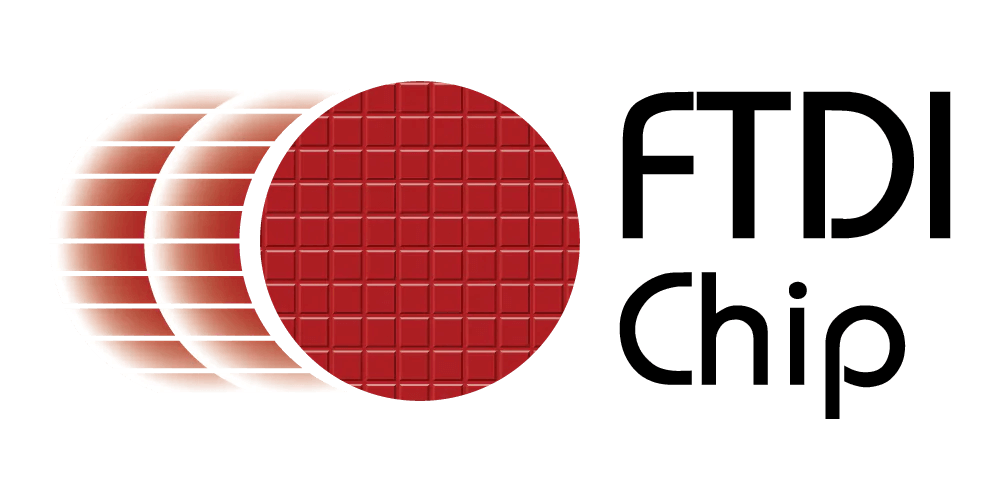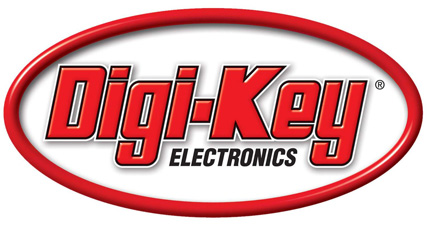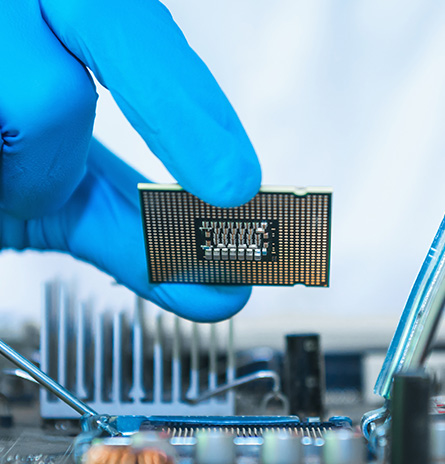Smart Home Controller
A Smart Home Controller is a centralized system that manages various smart devices within a home, such as lights, thermostats, security systems, cameras and appliances. It acts as the brain of the smart home ecosystem, allowing users to control and automate their devices through a single interface, which could be a mobile app, a web portal or even voice commands via virtual assistants like Amazon Alexa or Google Assistant.
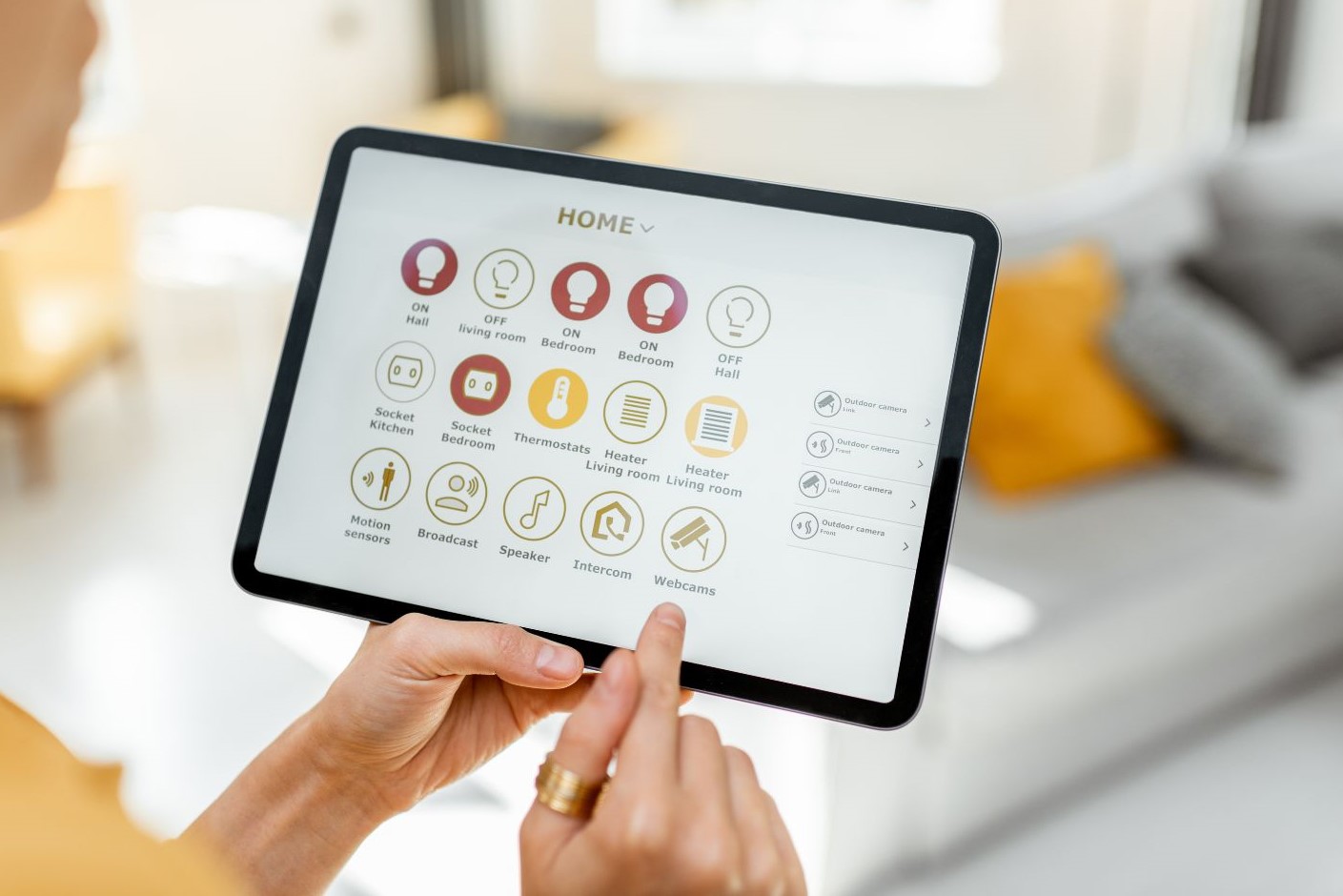
How an FTDI USB Device can be used with a Smart Home Controller
FTDI USB devices are typically used for serial communication over USB. These devices are often utilized to interface with hardware that uses serial communication protocols, such as RS-232, UART or TTL.
In the context of a Smart Home Controller, an FTDI USB device can be used to interface with various smart home sensors or other devices that communicate over serial interfaces. Here’s how it can be integrated:
-
- Interfacing with Legacy Devices
Many older smart devices or sensors may not have modern network interfaces but can communicate via serial ports. An FTDI USB device can be used to connect these devices to the smart home controller via a USB port.
-
- Custom Sensor Integration
DIY smart home enthusiasts often create custom sensors or devices that communicate over serial. An FTDI USB device can bridge these custom devices with the smart home controller.
-
- Debugging and Development
Developers can use FTDI USB devices to monitor and debug serial communication from various smart devices, ensuring they are correctly integrated into the smart home ecosystem.
Example Application: Home Automation with Environmental Sensors
Imagine a smart home where environmental sensors (temperature, humidity, air quality) are used to monitor and automate the home environment for optimal comfort and safety. Some of these sensors communicate over UART.
Key components are:
-
- Smart Home Controller
A Raspberry Pi or a dedicated smart home hub
-
- FTDI USB Device
An FTDI USB device to connect serial sensors to the Smart Home Controller
-
- Environmental Sensors
Sensors that measure temperature, humidity and air quality which output data over a serial interface
-
- Home Automation Software
Software like Home Assistant or OpenHAB running on the Smart Home Controller
FTDI products can be integrated into various applications to allow for:
-
- Port expansion
- USB charging
- USB connectivity to phone or PC
- Data download
- Synchronization to application software either on PC or system with USB Host
- Firmware updates
- Configuration and more!
FTDI IC’s have the following key features making it an ideal candidate for the application:
-
- USB Full / High / SuperSpeed connectivity depending on the application requirements
- Multiple data interfaces including UART, RS232, RS485, RS222, SPI, I2C, FIFO and GPIO
- Entire USB protocol handled on the chip. No USB specific firmware programming required.
- EEPROM for customization
- Data transfer rates (up to): UART (12Mbaud), SPI (52.8Mbps), I2C (6.66Mbit/s), FIFO (40MBps for USB2.0 and 400MB/s for USB3.0)
- Integrated receive and transmit buffers for high data throughput
- FTDI’s royalty-free drivers eliminate the requirement for USB driver development in most cases
- Battery Charger Detection which may be used by mobile devices to detect the presence of a charger on the USB port to enable higher current / faster charging of batteries
- Low operating current and USB suspend current
- Extended operating temperature range: -40°C to 85°C (Industrial), -40°C to +105°C (Automotive)
- Available in various compact Pb-free from as small as 12 Pin DFN package (RoHS compliant)!
The block diagram below shows at a high level how FTDI’s IC can be integrated into the application.
The USB port of the application can be connected to a phone, PC, tablet or embedded processor. The application software controls the FTDI IC which may be connected to a processor inside the application and communicates via one of the supported protocols (UART, RS232, RS485, RS222, SPI, I2C, FIFO and GPIO). This could allow for configuration, data download, firmware updates, etc.
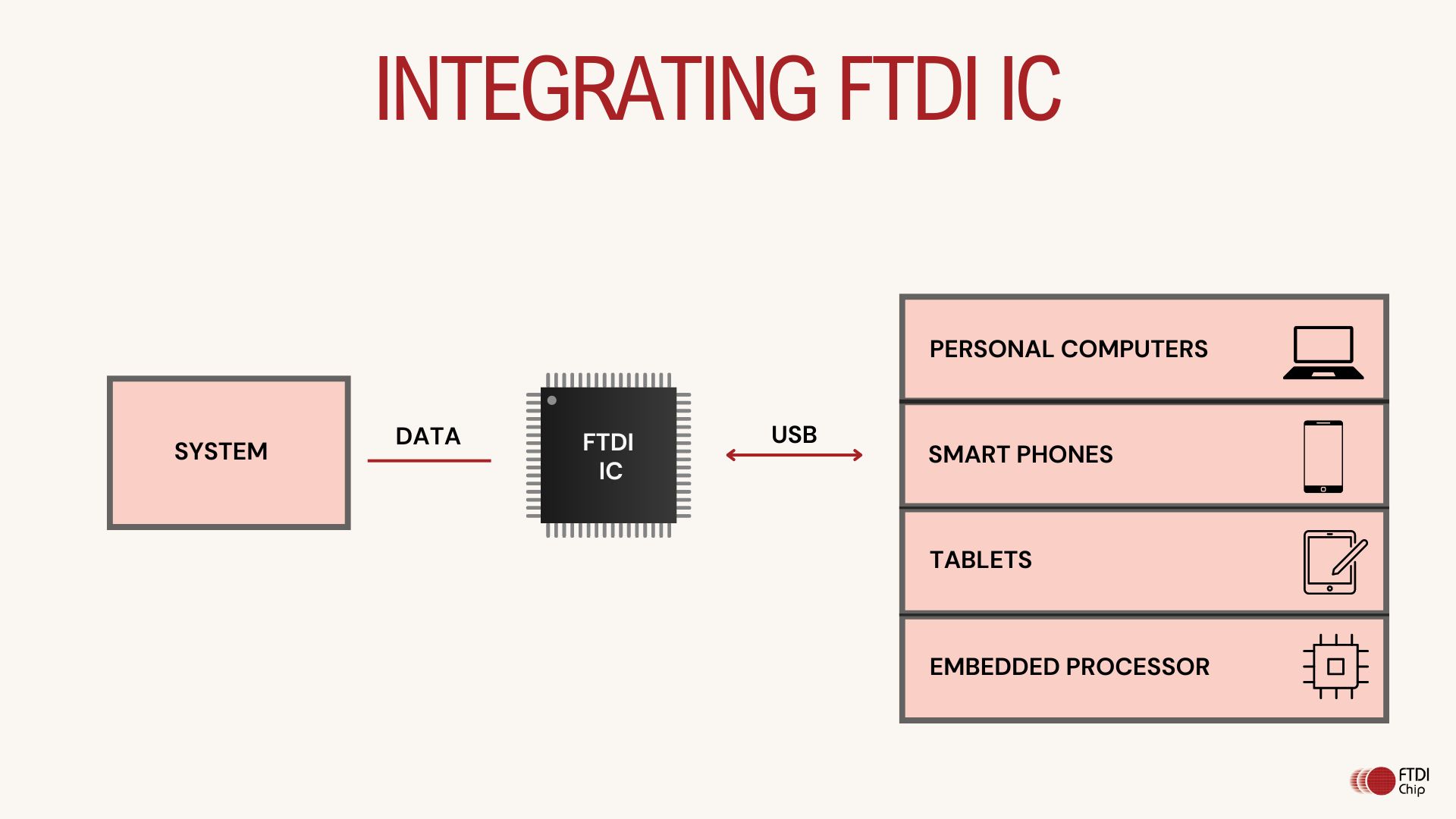
Another typical use case to integrate FTDI ICs into the application is to host the FTDI ICs with an MCU or embedded system which has a USB Host Controller allowing for port expansion and other various communications paths:
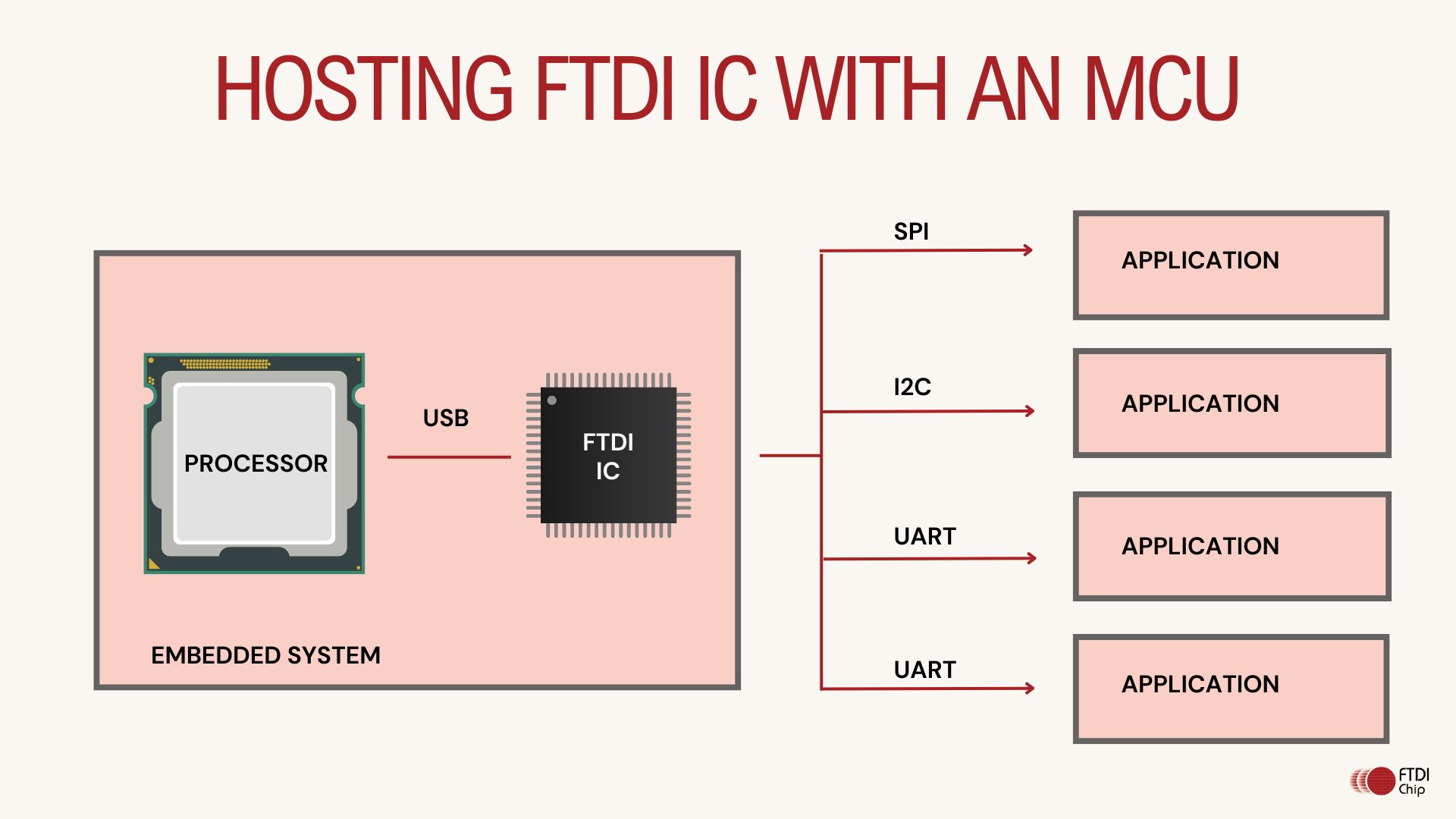
Recommended ICs:
